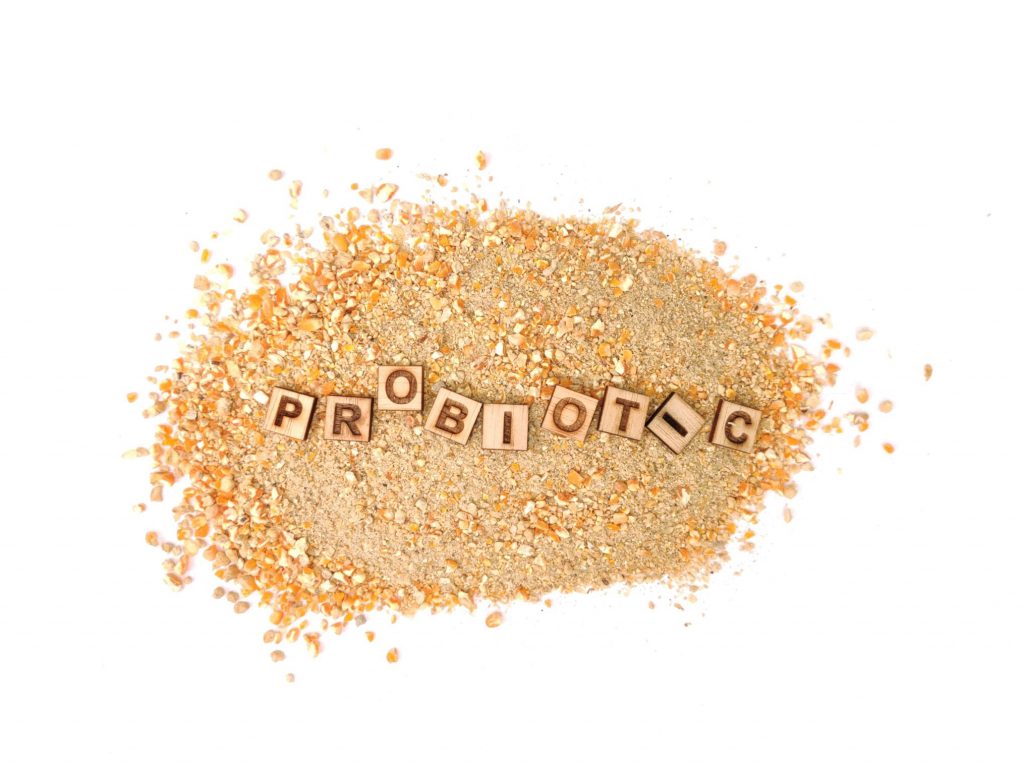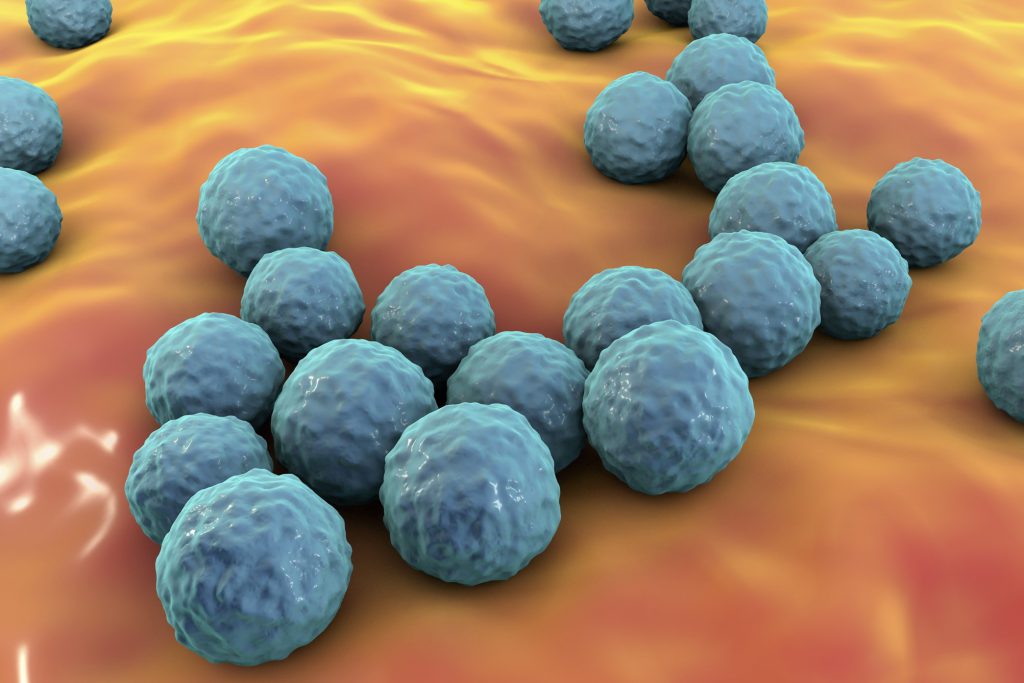Connie: Dear friends, thank you for joining us again this Saturday evening. Today, we will be discussing the relationship between probiotics feed and performance indicators of animal production. We are glad to have invited our old friend Dr. Leonard Hofstadter, who has been an editor of scientific journals for a long time, for today’s episode. Thank you for being here, Dr. Hofstadter.
Dr. Hofstadter: Thank you for inviting me, Connie. Good evening, everyone. It is quite nice to see you again. I’m very excited to be here.
Connie: In the previous program, we learned about the effect of probiotics on animal immunity and the improvement of rumen function. Dr. Hofstadter told us that probiotics enhance the immune response and help fight intestinal pathogens. The immunomodulatory activity of probiotics is achieved by stimulating intestinal-related immunity. In addition, they can enhance antibody-mediated or cell-mediated immune responses. Probiotic yeast plays an active role in improving rumen pH and fermentation of ruminants. More importantly, probiotics can reduce methane production through a variety of mechanisms. Some types of bacteriocins produced by probiotics have also shown direct inhibitory effects on Methanogens in vitro. So with that conclusion, my first question of the evening would be, what benefits can regular use of probiotics bring to animals?
Dr. Hofstadter: Good summary, by the way. I remember the addition of probiotics to ruminants was initially recommended for stressed or diseased animals when the intestinal microflora is dysregulated. However, more studies have proved that regular nutrient supplementation will affect nutrient intake, digestion, production performance, and economic benefits. I suggest we discuss this in two parts, which are non-ruminants and ruminants.
Connie: Sounds good. Let’s start with non-ruminants, or monogastric animals. So how does the important role of regular nutrient supplementation reflect in non-ruminants?
Dr. Hofstadter: In monogastric animals, feeding accounts for about 70 to 75 percent of the total cost. So an optimized diet is necessary to provide all the necessary nutrients for optimal health and productive performance. The intestinal microbiota plays an important role in many ways, like intestinal health and homeostasis, host metabolism, interaction with the intestinal associated lymphatic system, pathogen inhibition, digestion of complex substrates including non-starch polysaccharides, and affecting overall production traits. Probiotics can help to improve the performance traits such as weight gain of growing animals, broilers, and pigs, and improve the feed conversion efficiency of meat and egg production.
Connie: Wow, must be a heavy weight on their shoulders carrying so many important roles. How do probiotics affect the growth of young animals?
Dr. Hofstadter: The first few weeks after birth are essential for the gastrointestinal microflora composition and other factors of young animals and birds in the subsequent life stages. Probiotics help stabilize the intestinal microbiota, and you know, prevent the occurrence of many diseases, such as coccidiosis and diarrhea. In this regard, the addition of Bacillus subtilis has been proved to improve the production performance and meat quality of broilers, as well as the production performance of poultry affected by necrotizing enteritis. Moreover, studies have shown that Bacillus amyloliquefaciens can improve the feed conversion rate of broilers.
Connie: Other than stabilizing the intestinal microbiota, the addition of probiotics to the diet can stimulate the immune system and improve the antioxidant status. What impact does this have on increasing animal production?
Dr. Hofstadter: Probiotics synthesize endogenous antimicrobial peptides in the intestine to improve production performance. We have seen in many studies that adding different probiotics to the diet can improve the growth performance of chickens and pigs. The addition of Enterococcus faecium can reduce the number of Salmonella and increase the weight gain and chest muscle yield of broilers.
Connie: I believe that the feed conversion rate of feeding animals largely depends on the amount of food digested and absorbed by animals. What contribution has probiotics made in this regard?
Dr. Hofstadter: Probiotics improve the ultrastructure of the mucosa by enhancing the activities of some digestive enzymes, such as protease, lipase, and amylase, so as to help digestion and absorption of nutrients. But we have also seen some contrary reports showing that probiotics in the diet did not affect the growth performance of Broilers and pigs.
Connie: What do you think could be the reasons for these contrary results?
Dr. Hofstadter: These differences may be related to probiotic species, dosage, feed processing containing probiotics, animal age, dietary structure, and health status.
Connie: Any research that can better explain the effect of some probiotics on improving feed conversion?
Dr. Hofstadter: Yes, of course. It is reported that Lactobacillus, Bacteroides, Acinetobacter, Streptococcus, and Clostridium are more abundant in the metagenomic analysis of animal feces samples with a high feed conversion rate. In contrast, animals with low feed conversion had a higher abundance of Escherichia coli, Salmonella and Shigella. This shows that to improve the overall production performance of animals, it is necessary to establish a good intestinal flora.
Connie: Good point. We have been talking about non-ruminants. Now moving on to the case of ruminants, what are the effects of probiotics on their feed intake and digestion?
Dr. Hofstadter: One of the significant effects of probiotics is to increase the voluntary feed intake of feed dry matter. Optimal dry matter intake and digestibility are essential to provide nutrients necessary for animal growth, milk and meat production. In this regard, the research on bacterial probiotics is much less than that on yeast.
Connie: How can feeding yeast to animals increase dry matter intake?
Dr. Hofstadter: Take cows as an example. When fed with Enterococcus and yeast, the dry matter intake of dairy cows was higher. On the contrary, the effects of bacterial probiotics and yeast probiotics on dry matter intake were not obvious. It shows that the basic diet, types, and strains of probiotics will affect the effect of probiotics on dry matter intake.
Connie: Have there been studies to observe whether there is any difference between cows and beef cattle when they are fed with yeast?
Dr. Hofstadter: On this issue, a meta-analysis of studies considering various yeast products is concluded. The dry matter intake response of dairy cows increased by an average of 0.44 kilograms to 0.62 kilograms per day, while that of dairy cows increased by 1 percent.
Connie: That’s interesting. I heard that it is of practical significance to improve the digestibility of carbohydrates in compound feeds such as neutral detergent fiber. Why is that?
Dr. Hofstadter: Because the digestibility per unit neutral detergent fiber increased by 0.17-kilogram dry matter intake and 0.25 kilogram 4 percent fat corrected milk production. As we discussed earlier, the digestion of higher fiber by probiotics is the result of the transformation of microbial population to cellulose decomposition. So you can imagine, probiotic yeast supplementation can improve fiber digestion. But few studies have reported better protein digestion.
Connie: Have there been any strategies developed to improve dry matter digestion in animals?
Dr. Hofstadter: Yeah, I think fungal culture management has been shown to improve dry matter digestion in growing buffalo. Nevertheless, few researchers have not recorded any changes in nutrient digestibility with the addition of probiotic yeast. So the effect of probiotics on digestibility has been inconsistent in many studies. This is further complicated by different factors, such as dose, feed, variety, strain, and physiological state of animals.
Connie: Bacteria and fungal probiotics have mixed effects on milk production performance and efficiency. Can you elaborate on this in more detail?
Dr. Hofstadter: In this regard, some researchers found that when adding Staphylococcus cerevisiae to cows’ diet, milk production increased by 4 percent and 8 percent respectively. Not only that, milk contains more fat and protein. Similarly, Holstein cows had better milk production performance when fed a combination of yeast culture and propionic acid bacteria. In addition, cows produced more milk components when receiving corn grains treated with Aspergillus oryzae.
Connie: Such an exciting finding. What is the effect of feed supplemented with probiotics on the lactation persistence of animals?
Dr. Hofstadter: With regard to this, it was observed that yeast supplements had stronger lactation persistence. The meta-analysis of different probiotic yeast products showed that it had a positive impact on milk yield and the composition of dairy cows. Yeast can also improve the feed efficiency of dairy cows by 3 percent. But interestingly, the beneficial response of low yield hybrid cows to supplementary yeast culture seems to be less obvious. Overall, the improvement of lactation response may be the result of increased dry matter intake and digestibility, thus ensuring the increase of nutritional precursors required for milk and milk composition synthesis.
Connie: Let me briefly summarize what we have talked about today and in the last episode. the application of probiotics in ruminants mainly focuses on improving rumen fermentation efficiency, such as stabilizing pH and enhancing fiber digestion, and reducing rumen methane production. Through these aspects, probiotics affect animal production performance. Among the several probiotics studied, yeast is the most widely studied, followed by the application of bacterial probiotics in ruminant nutrition. In non-ruminants, bacterial probiotics are better than yeast in improving production performance. I hope you enjoyed today’s discussion. Thanks, Dr. Hofstadter, for the very helpful information. And thanks, everyone, for listening. We will continue our discussion on the applications of probiotics in the next episode. See you next week!
Dr. Hofstadter: Thanks, everyone. I hope we will see you next time.
